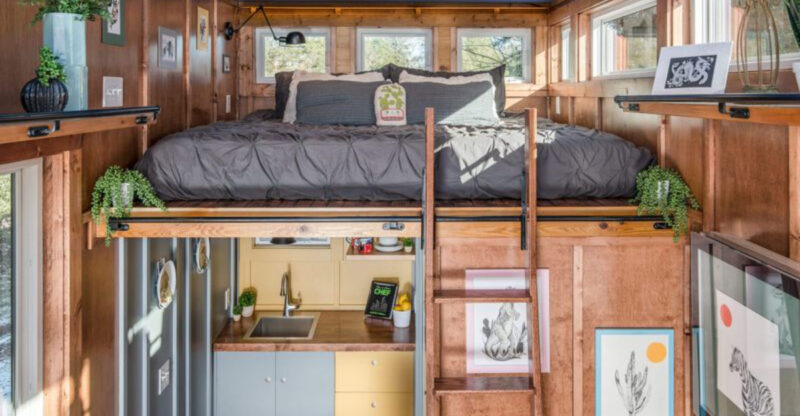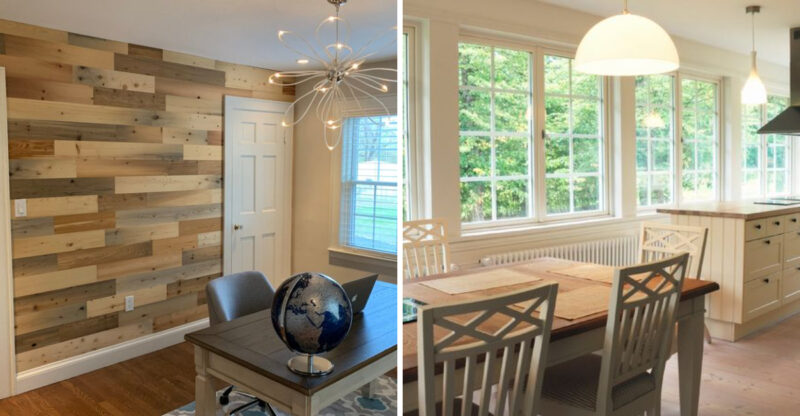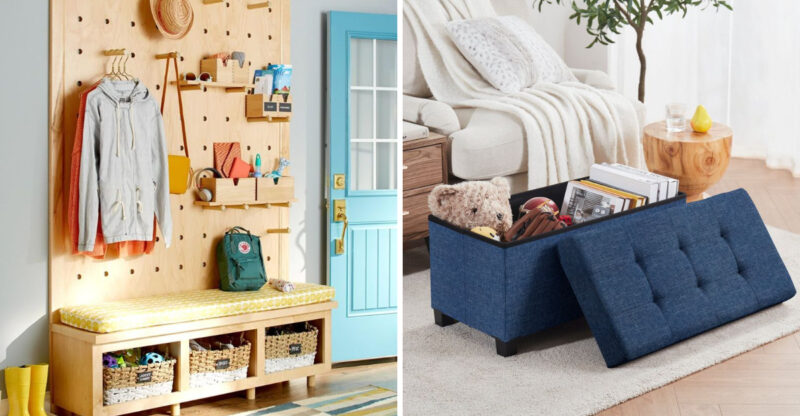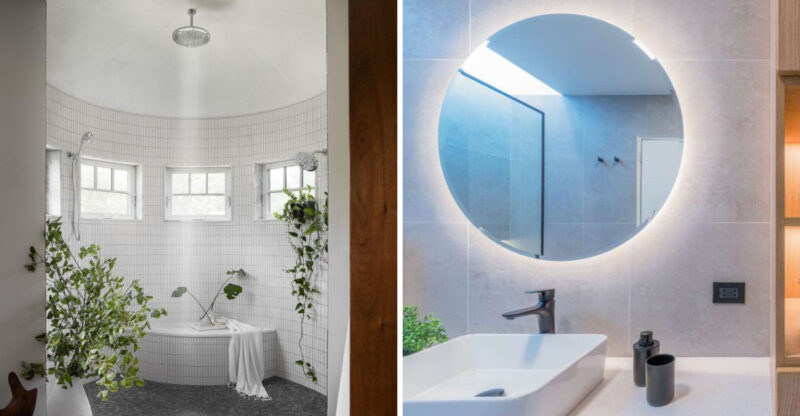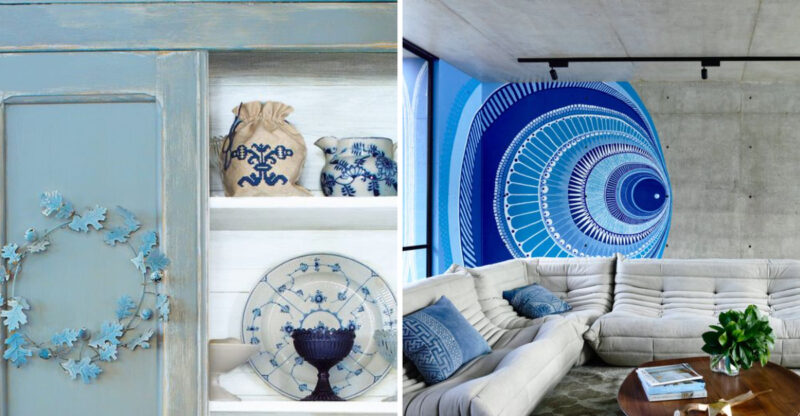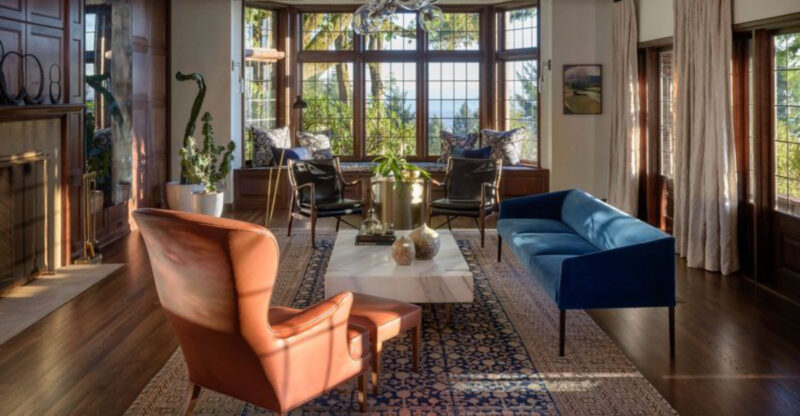12 Ideas To Boost Storage Without Extra Pieces Of Furniture
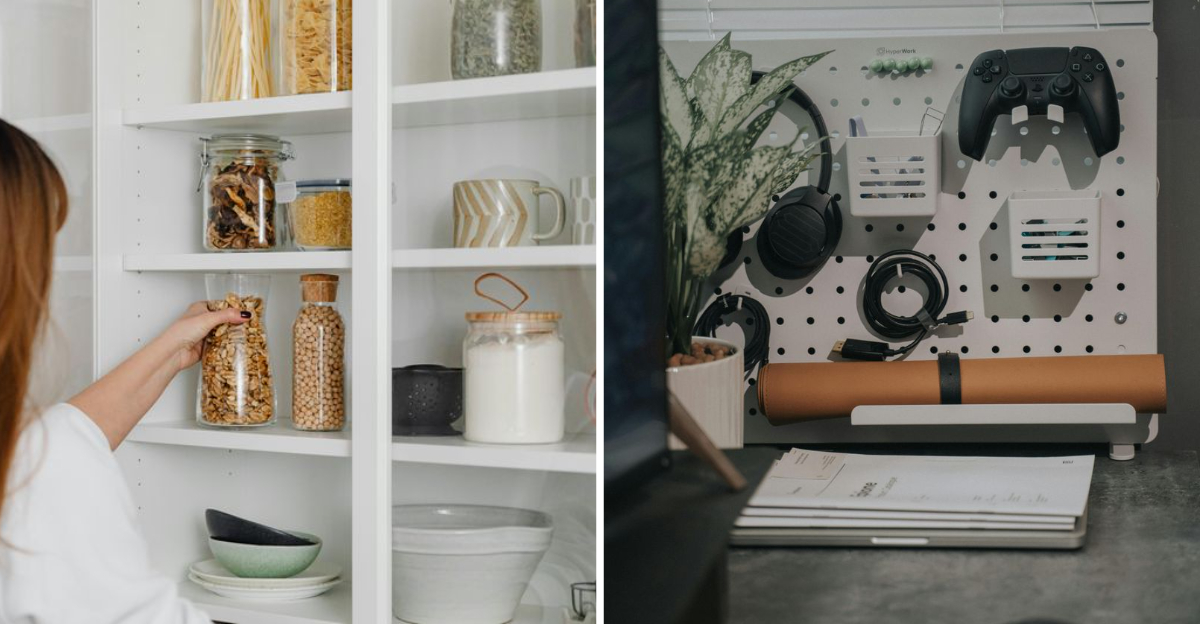
Living in a crowded space can be stressful, but creating order doesn’t always mean spending money on new furniture.
By rethinking how you use your existing space, you can unlock hidden storage and make your home feel larger and more functional.
The effectiveness of these strategies will vary depending on your home’s layout and how much clutter you’re working with, but even small tweaks can make a noticeable difference.
1. Installing floating shelves
Floating shelves transform empty wall space into valuable storage without taking up any floor space. I love how they seem to hover magically, creating a modern look while holding books, plants, or decorative items.
The beauty of these shelves is their versatility. You can install them in virtually any room from bathrooms to living rooms to kitchens. For a unique look, try staggering them at different heights or creating a geometric pattern.
If you’re worried about installation, don’t be! Many home improvement stores sell easy-to-install kits with clear instructions. Just make sure to find the wall studs for heavier items, or use proper anchors if you can’t.
2. Adding wall-mounted hooks
Wall hooks are my secret weapon for instant organization! These small but mighty storage solutions can hold coats, bags, jewelry, kitchen utensils almost anything that can hang.
You might be surprised by how much floor and drawer space you’ll free up once items are hanging neatly on the wall. In bathrooms, hooks can hold towels and robes; in kitchens, they’re perfect for mugs, measuring cups, or cooking utensils.
Did you know you can create patterns or clusters with hooks to make them decorative as well as functional? Try arranging them in a line, circle, or even spelling out a word. Heavy-duty adhesive hooks work well for renters who can’t make permanent changes.
3. Creating built-in cabinets
Built-in cabinets make use of awkward spaces that regular furniture can’t fit into. I’m always amazed at how alcoves, knee walls, or spaces between studs can be transformed into custom storage.
Though this option requires more planning and possibly professional help, the results are worth it. Your storage becomes part of the architecture, creating a seamless look while maximizing every inch. Recessed medicine cabinets are a perfect example they provide bathroom storage without protruding into the room.
If full built-ins seem daunting, start small with a recessed niche in a bathroom wall for toiletries or between kitchen studs for spices. These projects can often be completed in a weekend with basic carpentry skills.
4. Utilizing over-the-door organizers
Over-the-door organizers are game-changers for small spaces! These handy helpers use the vertical space on the back of doors that normally goes wasted. My pantry door holds an organizer with dozens of snacks and spices that would otherwise clutter my shelves.
You’ll find options for every room: shoe pockets for bathrooms to hold toiletries, mesh pockets for kids’ rooms to store toys, and metal racks for kitchens to organize cutting boards and baking sheets. The best part? They’re completely hidden when the door is closed, keeping your space looking tidy.
When choosing an organizer, measure your door first and check the thickness. Some hang with hooks while others use tension rods pick the style that works with your door type.
5. Installing pegboards in workspaces
Pegboards transformed my cluttered workspace into an organized dream! These perforated panels mount to walls and hold a variety of hooks, shelves, and bins that can be rearranged whenever your needs change.
Though traditionally found in garages for tools, pegboards have become stylish solutions for craft rooms, home offices, and even kitchens. I painted mine a bright color to make it a feature wall rather than just utility storage. The versatility is incredible from holding scissors and paintbrushes to supporting small shelves for supplies.
When installing, make sure to leave space between the wall and board using furring strips. This gap allows the hooks to slide into the holes properly. Then outline your tools directly on the board to remember where everything belongs.
6. Using magnetic knife strips
Magnetic knife strips saved my countertops from bulky knife blocks! These slim metal bars mount easily to walls, keeping sharp utensils secure yet accessible. Beyond knives, they’re surprisingly versatile for holding metal tools, scissors, or even bobby pins in a bathroom.
Safety is important when positioning these strips. I installed mine at adult height, away from where children could reach. The satisfaction of hearing that magnetic “click” when placing each knife is oddly satisfying!
If you’re worried about the industrial look, wooden-faced magnetic strips offer a warmer aesthetic. Some homeowners install them inside cabinet doors for hidden storage. For kitchen use, position them near your main prep area but not directly above the stove where heat and grease could damage your knife handles.
7. Adding recessed shelving in closets
Recessed shelving makes use of the hidden space between wall studs in your closets. I was amazed to discover this untapped storage potential hiding literally inside my walls! These narrow shelves are perfect for small items like jewelry, accessories, or toiletries that might otherwise get lost.
The project requires finding the studs in your wall and carefully cutting between them to create niches. If you’re not comfortable with DIY construction, this might be a job for a handyman. The finished shelves can be painted to match your walls or lined with decorative paper for a pop of color.
Are you a renter? Try a less permanent solution by hanging shallow fabric pockets on your closet walls instead. They provide similar organization without altering the structure of your home.
8. Incorporating bench seating with storage
Window seats and banquettes with lift-up tops or drawers underneath create cozy seating plus hidden storage. This dual-purpose solution has become my favorite addition to my home offering a place to sit while concealing items I don’t need daily.
In dining areas, bench seating along a wall can replace chairs on one side of the table, saving space while providing storage for table linens or special occasion dishware. For entryways, a storage bench offers a spot to put on shoes while hiding seasonal items inside.
If building a custom bench seems overwhelming, many furniture stores sell ready-made storage benches. Look for sturdy hinges with safety features that prevent lids from slamming down, especially important in homes with children or pets.
9. Installing pull-out pantry shelves
Pull-out pantry shelves transformed my deep, dark cabinets into accessible storage spaces! These sliding shelves bring items from the back of cabinets forward, eliminating the frustration of digging past front items to reach what’s behind.
The installation is simpler than you might think. Many home improvement stores sell kits that retrofit existing cabinets with sliding hardware. For standard cabinets, you’ll just need a screwdriver and about 30 minutes per shelf. The investment pays off every time you effortlessly access that appliance or ingredient that used to be just out of reach.
If full shelves seem like overkill, try pull-out baskets instead. They work on the same principle but are less expensive and easier to install. These are especially helpful under sinks where plumbing creates awkward storage spaces.
10. Hanging baskets on walls
Wall-mounted baskets add charming, accessible storage to any room. My bathroom wall features three tiered baskets that hold toiletries, keeping counter space clear while adding rustic style.
Wire baskets work well for fruits and vegetables in kitchens, while fabric or woven options soften the look in living spaces. The beauty of this solution is its flexibility hang baskets individually or in groups, horizontally or vertically, depending on your space and needs.
When mounting baskets, consider what you’ll store in them to determine appropriate height and weight capacity. For heavier items like books or canned goods, ensure you’re anchoring into wall studs. Lightweight items like hand towels or mail can hang from simple hooks or nails. Some baskets even come with their own mounting hardware for foolproof installation.
11. Installing cabinet organizers and dividers
Cabinet organizers transformed my kitchen from chaotic to controlled! These internal solutions maximize existing cabinet space without any visible changes to your room. Vertical dividers turn flat cabinets into perfect storage for cutting boards, baking sheets, and platters.
Pull-out trash systems hide unsightly garbage bins while freeing up floor space. Spice organizers bring order to jumbled seasoning collections. My favorite addition was a two-tier lazy Susan that doubled the usable space in my corner cabinet no more lost items in the back!
Most of these organizers install with just a few screws, making them perfect weekend projects. Measure your cabinets carefully before purchasing to ensure proper fit. For renters, look for tension-mounted or free-standing organizers that won’t damage cabinets but still provide the organizational benefits.
12. Using multi-functional furniture with hidden storage
Multi-functional furniture pieces work double-duty in your home without adding extra items. My coffee table has a lift-top that raises to desk height for working from the couch, while the inside holds blankets, remote controls, and gaming equipment.
Ottoman beds reveal storage space for linens when you lift the mattress platform. Hollow ottomans offer seating plus hidden storage for toys or magazines. Even wall beds (Murphy beds) can include shelving or desks that remain accessible when the bed is folded away.
Though this technically involves furniture, you’re maximizing what you already have rather than adding more pieces. The key is choosing items that serve multiple purposes simultaneously. When shopping for new furniture, always consider storage potential even small additions like a headboard with shelving can make a significant difference.

